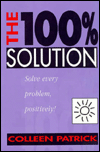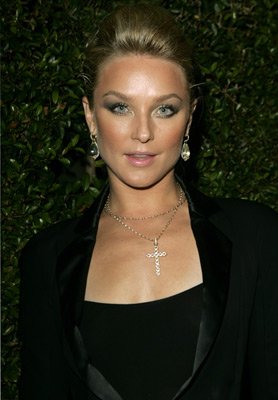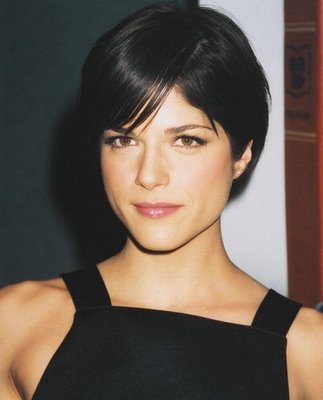"Shot-sheeting" is the process of listing every single shot I see in my head for my next feature film, THE LONELY GOATHERD.
It's excruciatingly tedious, but if I don't do it now - long before the film is shot, I won't be able to pass on how I see the film looking to key crew members, like the director of
photography, editor, and any other collaborator who needs to see how I see the film unfolding.
Some scenes are easily shot-sheeted in minutes; others take meticulous, painstaking hours.
Here's what it's like:
The line in the script says simply, "Harry grabs the apple and takes a bite while he sits at his computer."
As the director, you have to ask yourself a lot of questions before you list the shots in this apparently very short, very simple scene.
What is the tone of the scene?
How can I capture it in the first frame?
What is the timing of the scene? Fast? Slow? Somewhere in between?
What sound do I need up front and in the
bg (background)?
What follows this scene?
Why does he do this (like, what's his motivation)?
How emotional is he inside and outside and how can I show it with his actions?
How should his hands look (does he work in dirt or on a keyboard)?
His teeth?
His face?
His eyes?
His clothes?
His hair?
His room/environment?
How large a bite should Harry take?
How should he chew the apple (does he have a toothache)?
Knowing all this going in to the effort of shot-sheeting is essential for me.
Some directors wait until the last minute to shot sheet; some don't do it at all. Some prefer to create story boards - pictures of the scene drawn in a panel of frames like a comic strip. I tend not to story board because I feel it keeps the crew too wed to the pictures - which, by their very cartoon strip nature, are designed to be shot separately and edited with fast cuts.
I prefer the
freedom shot-sheeting gives me at the shoot itself "on the day," because I can manipulate all the elements of the scene up to the last minute in my computer and then on the set.
I like to multi-layer action scenes, for example. That is, while one thing is going on close up, there are other things going on immediately behind the primary action which must be seen at just the right moment while it plays out. I shot such a scene in THE WHOLE TRUTH.
Typically, the scene would be shot in tiny segments and edited together with fast cuts; my scene has a number of things going on at once without all the cuts.
There is one scene in THE LONELY GOATHERD that I'm storyboarding because so much is going on, and the audience needs to see each moment of it. I need to shoot it one small segment at a time.
Back to shot sheeting the simple script line, "Harry grabs the apple and takes a bite while he sits at his computer."
I know Harry's upset about something at the top of the scene. How do I show that from frame 1?
Here's the shot sheet I develop - sometimes moving just like the character does when I write it down so I can be sure to catch nuances:
1. CU (close-up) gnarly apple that looks too yukky to eat. Harry's hand grabs the apple, whipping it out of frame.
2. ECU (extreme close up), Harry's face, as he whisks the apple to his mouth, viciously ripping a large bite out of the aged fruit.
3.
MCU (medium close up), Harry's face, as he
reax (re-acts) to the hideous taste of the apple and throws it, disgusted, in the trash - spitting out the apple bite along with it.
4. CU, hideous apple, landing in the trash can.
5.
MCU, Harry, upset, folds his arms, legs sticking straight out under his desk as he sees THE PHOTO on his computer.
6. CU, photo of Cute Girl hugging Cute Guy on Harry's computer screen.
7. CU, Harry stares grimly at the photo - the computer light setting his face aglow.
8. ECU, Harry's angry eyes as they shift slowly into a sad eyes. Tears well, and one streams slowly down his cheek.
*end of scene*
When we actually shoot the scene, we may modify the shot sheet because of several elements that would influence the shoot on the day, but since the essentials are there, we know we'll get the "bread and butter" of the scene.
After this simple, primary version of this scene on my shot sheet, I'd review and redo it and finesse at least a couple more times to see if we can intensify it emotionally and visually.
This is only one way to set up shots. There are as many others as there are directors.
I just list what I consider the best way to set up the scene, then work from there. Finesse, finesse, finesse. I try different approaches. Different apples. What if the apple is so crunchy he can't get a bite. What if, what if, what if.
Collaborating with the actor is the next step. How does he see the film? How does he see Harry grabbing and eating the apple?
Actors aren't normally involved with the way the scene is directed shot for shot, but they must trust that you, the director, will find the best way possible to convey the emotional state of the character. The best way to do that for me is to discuss the character's behavior and emotions with the actor so I can visualize what we're both seeing.
For films, acting is all about re-acting. How can I best show him reacting to the turmoil, the angst, the upset that is going on in his life and mind?
I frequently do exactly what I see the character doing in my mind. If she walks across the room, that's what I do in order to make certain the visual portrayal is true to the character and, again, catch all the nuances.
Maybe include a cutaway of his fist curling up tight?
A "cutaway" is a shot of something that we take separately but include in the montage of the scene.
If Harry always talks about how the cuckoo clocks of the world are crazy-makers, we might toss in a shot of a cuckoo clock going off sporadically throughout the scene, ending it with a dozen cuckoo clocks going off at once, each clock filmed separately and stacked one atop the other so it looks - well, crazy!
As soon as I finish shot-sheeting, I review the script to make the changes I created during the shot-sheeting process. Problems I may have found during the shot-sheeting process. Finding little action lapses - where the action isn't quite fully connected is common.
We don't want to shoot too much (especially using 35mm film!), we don't want to shoot too little, but we still want to give ourselves enough good coverage for each scene so we have plenty to choose from in the editing suite.
So that's a shot sheet of just one simple sentence in a script.
Fancy doing this with 100 pages filled with 60 lines on each page? That's what I've been doing for the past several weeks every moment I have "free."
That's just one of the thousand tedious parts of the "glamorous" job of directing that so many people *think* they want to do - until they actually do it. Me, I love every tiny little task, every aspect of the job others might consider boring, too miniscule or detailed.
While working through the shot sheets with my crew collaborators (DP, production designer, sound, editor), I also get to cast and work with actors - my very favorite part of the job.
Labels: Colleen Patrick, film directing, shot-sheeting







